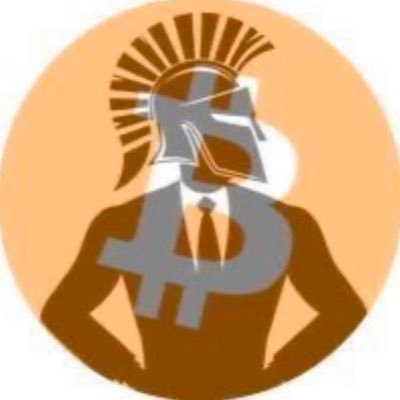Why Polygon (MATIC) is Set to Dominate the Future of Ethereum Scaling and Web3
As the cryptocurrency landscape continues to evolve, Polygon (MATIC) has emerged as one of the most promising projects, positioning itself as a leading solution for Ethereum’s scalability challenges. With its ability to drastically improve transaction speed, reduce costs, and enable a wide range of decentralized applications (dApps), Polygon is poised to play a pivotal role in the future of Ethereum and the broader Web3 ecosystem. In this article, we’ll explore why Polygon (MATIC) is a solid bet for those looking to capitalize on the growth of blockchain technology and decentralized finance (DeFi).
1. Ethereum’s Scalability Solution: Polygon as Layer 2
Ethereum is the backbone of decentralized applications, decentralized finance (DeFi), and NFTs. However, it suffers from high gas fees and slow transaction speeds, especially during periods of high demand. This is where Polygon comes in.
Polygon is the leading Layer 2 scaling solution for Ethereum, designed to solve the network's scalability issues while maintaining its security and decentralization. By processing transactions off-chain and using its unique Proof-of-Stake (PoS) consensus mechanism, Polygon enables Ethereum to handle thousands of transactions per second (TPS), far beyond Ethereum’s native capacity.
As Ethereum continues to dominate the decentralized space, Polygon’s role as a scalability solution will only grow. This makes Polygon an essential part of Ethereum’s future, ensuring it can scale efficiently while still offering the security that makes Ethereum a leader in the blockchain space.
2. Major Partnerships and Growing Adoption
Polygon’s growth isn’t just theoretical — it’s being fueled by real-world adoption and strategic partnerships with some of the biggest names in both the crypto world and traditional industries. Companies like Nike, Starbucks, Reddit, and Meta (formerly Facebook) are already integrating Polygon into their platforms, especially in areas like NFTs, loyalty programs, and Web3 applications.
These partnerships are particularly important because they validate Polygon’s use case and utility in the real world. For example, Reddit’s adoption of Polygon to scale its Community Points system highlights how blockchain can be used for real-world applications, providing users with decentralized rewards.
Furthermore, Polygon’s adoption in the DeFi ecosystem is significant. Leading decentralized applications (dApps) like Aave, Uniswap, and SushiSwap have launched on Polygon, leveraging its low fees and fast transactions. This growing ecosystem attracts more developers and users, further solidifying Polygon’s position as a go-to platform for Ethereum scaling.
3. Fast Transactions and Low Fees: A Game-Changer for DeFi and NFTs
Polygon’s ability to offer low fees and fast transaction speeds is one of the most compelling reasons to be bullish on the project. As Ethereum continues to face congestion and high gas fees, Polygon’s Layer 2 solution provides a much-needed alternative.
For decentralized applications and users, high gas fees can be a barrier to entry, especially for smaller transactions. With Polygon, transactions are processed at a fraction of the cost, and finality occurs within seconds. This makes Polygon a preferred platform for dApps, DeFi protocols, and NFT projects that need to offer an affordable and efficient user experience.
Not only does this attract users, but it also creates an economic model that’s sustainable for businesses and developers in the space. As more dApps migrate to Polygon for its scalability and low-cost transactions, the demand for the MATIC token increases, contributing to its value proposition.
4. Polygon’s Technological Innovations: Advancing Blockchain Solutions
Polygon’s technology doesn’t stop at scaling Ethereum. The platform is continuously evolving with innovative solutions that further enhance its utility and performance.
Polygon SDK: Polygon offers a powerful Software Development Kit (SDK) that allows developers to build their own customizable blockchains compatible with Ethereum. This flexibility enables a wide variety of use cases, from gaming to enterprise solutions and everything in between.
Polygon Hermez (zk-Rollups): Polygon’s acquisition of Hermez brings zk-rollups (zero-knowledge rollups) to the platform, a highly scalable solution that reduces transaction costs and improves throughput on Ethereum without compromising security.
Polygon Avail and Supernets: Polygon is also developing Polygon Avail, a protocol that enhances data availability for decentralized networks. Supernets, another new initiative, enables developers to create their own sovereign blockchains that are still interoperable with Polygon. These innovations ensure that Polygon remains a flexible and scalable solution for various decentralized applications.
5. A Thriving Developer Community and Ecosystem Growth
One of the key indicators of Polygon’s long-term success is its active developer community. The more developers building on Polygon, the more innovative dApps and protocols will emerge, driving the growth of the ecosystem. Polygon’s ecosystem now includes over 3,000 dApps, with more being added each day.
This ecosystem growth is vital because it creates a network effect — the more users and developers Polygon attracts, the more valuable the network becomes, creating a self-reinforcing cycle of growth. This active ecosystem positions Polygon to play a central role in the broader Web3 movement, which is expected to disrupt traditional industries and create a more decentralized, user-controlled internet.
6. A Strategic Vision for Web3 and the Future
Polygon’s vision extends beyond just Ethereum scaling. It aims to become a key player in the Web3 movement, enabling a more decentralized and user-owned internet. With partnerships with major players like Meta and Reddit, Polygon is helping drive adoption of decentralized technologies among the mainstream.
As the adoption of Web3 grows, the demand for blockchain infrastructure will increase, and Polygon’s ability to offer scalable, secure, and affordable solutions will make it a foundational platform for the future digital economy. Whether it’s for NFTs, decentralized finance, gaming, or social platforms, Polygon is well-positioned to provide the tools needed to enable this transformation.
7. Strong Market Performance and Investor Confidence
Polygon’s market performance has shown resilience and growth. The price of the MATIC token has consistently outperformed many other altcoins, reflecting strong demand for its utility and its growing role in the blockchain space. As more DeFi applications, NFT projects, and businesses adopt Polygon, the value of its native token, MATIC, is likely to rise in tandem.
Moreover, Polygon’s liquidity and high TVL (Total Value Locked) in DeFi projects ensure that it remains a highly liquid and attractive investment option for those looking to gain exposure to the growing blockchain ecosystem.
Conclusion: Why Polygon (MATIC) is the Altcoin to Watch
Polygon’s combination of scalability, low fees, robust partnerships, and technological innovation positions it as one of the most promising altcoins in the blockchain space. With Ethereum continuing to dominate the decentralized ecosystem, Polygon’s role as a Layer 2 scaling solution is crucial to supporting the growth of DeFi, NFTs, and Web3 applications.
As Polygon continues to expand its ecosystem, improve its technology, and form strategic partnerships, it is well-positioned for long-term growth and adoption. For investors and users alike, Polygon (MATIC) represents an exciting opportunity to participate in the future of Ethereum and decentralized applications.
$POL
What is Ethereum?
---
$ETH
Ethereum is a decentralized open-source blockchain platform that enables the creation and execution of smart contracts and decentralized applications (dApps). Unlike Bitcoin, which is primarily a digital currency, Ethereum is a programmable blockchain.
It was proposed in late 2013 by Vitalik Buterin, a Russian-Canadian programmer, and launched in July 2015.
Its native cryptocurrency is called Ether (ETH), which is used to pay for transactions and computational services on the network.
---
Key Concepts in Ethereum
1. Smart Contracts
Self-executing contracts with code that runs on the Ethereum blockchain.
They automatically carry out actions when conditions are met — no middlemen required.
Example: A smart contract for crowdfunding releases funds only if the goal is met.
2. Decentralized Applications (dApps)
Apps that run on the blockchain, not centralized servers.
Built using Ethereum’s smart contract technology.
Examples: Uniswap (DeFi), OpenSea (NFTs), Axie Infinity (GameFi).
3. Ethereum Virtual Machine (EVM)
The environment where all Ethereum smart contracts are executed.
Allows developers to write programs in Solidity (Ethereum’s main programming language).
4. Ether (ETH)
The fuel (also called "gas") that powers Ethereum transactions and computations.
Also acts as a tradeable cryptocurrency like Bitcoin.
---
Ethereum's Transition to Proof of Stake (Ethereum 2.0)
What Changed?
In September 2022, Ethereum switched from Proof of Work (PoW) to Proof of Stake (PoS) — this was known as "The Merge".
Why It Matters:
99%+ reduction in energy consumption.
Introduced staking, where users lock up ETH to secure the network and earn rewards.
PoS increases scalability, security, and sustainability.
---
Ethereum Use Cases
1. Decentralized Finance (DeFi)
Platforms like Aave, Compound, and MakerDAO allow lending, borrowing, and earning interest — no bank needed.
2. Non-Fungible Tokens (NFTs)
Digital assets (art, music, collectibles) stored and traded on Ethereum.
Popular marketplaces: OpenSea, Rarible.
3. Gaming and Metaverse
Games like Axie Infinity and platforms like Decentraland are built on Ethereum.
4. DAOs (Decentralized Autonomous Organizations)
Community-led entities with no centralized leadership, governed by smart contracts.
---
Advantages of Ethereum
Versatility: Can host many types of applications.
Active Development: Huge developer community continuously improving the network.
Strong Network Effects: Most dApps and tokens are built on Ethereum.
Security: Highly secure due to decentralized design and massive number of nodes.
---
Limitations and Challenges
Scalability: Ethereum can be slow and expensive during congestion.
Gas Fees: High transaction fees can deter users.
Competition: Other blockchains like Solana, Avalanche, and BNB Chain offer faster and cheaper alternatives.
Regulation: Unclear regulatory future, especially in the U.S.
---
Ethereum Layer 2 Solutions
To solve scaling and fee issues, Ethereum supports Layer 2 (L2) networks — separate blockchains that work on top of Ethereum.
Examples:
Arbitrum
Optimism
Polygon
zkSync
These allow faster, cheaper transactions while using Ethereum's security.
---
Ethereum Roadmap: What’s Next?
Ethereum has a multi-year plan to scale and improve:
Upcoming Upgrades:
Sharding: Splits the network into smaller pieces (shards) to increase throughput.
Danksharding: A newer, more efficient form of sharding optimized for data availability.
Statelessness: Reduces the amount of data validators need to store.
---
Ethereum vs Bitcoin
---
Conclusion
Ethereum is the foundation of the Web3 movement — offering a decentralized alternative to the centralized internet. Its ability to power smart contracts and dApps has led to explosive growth in sectors like DeFi, NFTs, and DAOs.
With its ongoing upgrades and strong developer ecosystem, Ethereum continues to be a cornerstone of the blockchain industry and a serious driver of innovation in global finance and technology.
---



 أقل سعر
أقل سعر أعلى سعر
أعلى سعر 










































Gas البيانات الاجتماعية
في آخر 24 ساعة، درجة المعنويات على منصات التواصل الاجتماعي لعملة Gas بلغت 3، وكانت المعنويات على منصات التواصل الاجتماعي تجاه توجه سعر عملة Gas صعودية. كانت النتيجة الإجمالية لعملة Gas على وسائل التواصل الاجتماعي 0، وجاءت في المرتبة 753 بين جميع العملات المشفرة.
وفقًا لموقع LunarCrush، في آخر 24 ساعة، بلغ إجمالي إشارات العملات المشفرة على منصات التواصل الاجتماعي 1,058,120 مرة (مرات)، مع ذكر Gas بنسبة تكرار %0.01 ، فجاءت في المرتبة 366 بين جميع العملات المشفرة.
في آخر 24 ساعة، إجمالي عدد المستخدمين الفريدين الذين ناقشوا عملة Gas بلغ 656، وبلغ إجمالي عدد إشارات عملة Gas 67. ومع ذلك، وبالمقارنة مع الـ 24 ساعة السابقة، بلغ عدد المستخدمين الفريدين زيادة بنسبة %53 ، والعدد الإجمالي للإشارات تقليل بنسبة %18 .
وعلى تويتر، بلغ إجمالي التغريدات 1 التي تشير إلى عملة Gas خلال آخر 24 ساعة. من بينها، %0 صعودية لعملة Gas، و هبوطية لعملة Gas، و%0 محايدة لعملة Gas.
إنّ عدد المنشورات على موقع Reddit بلغ 2 والتي تُشير إلى Gas خلال الـ 24 ساعة الماضية. وبالمقارنة مع الـ 24 ساعة الماضية، فإن عدد الإشارات تغيّر تقليل بنسبة %0 .
نظرة عامة على جميع مواقع التواصل الاجتماعي
3